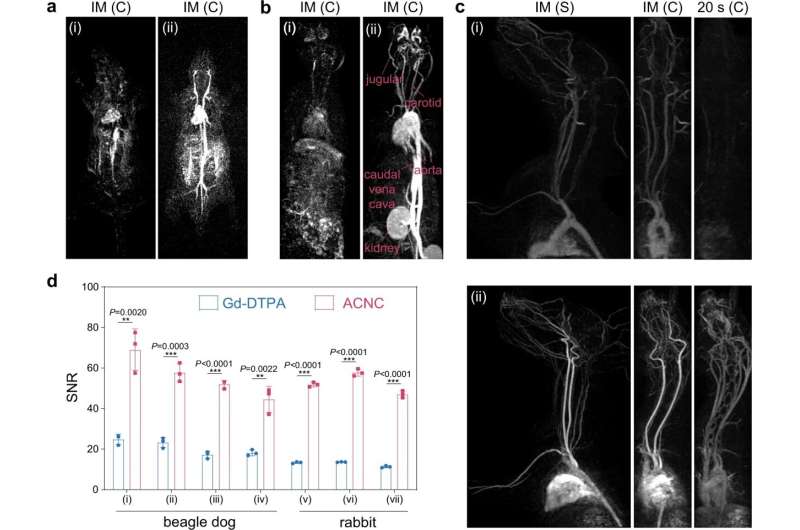A simple recipe for MRI contrasts up to four times higher

Magnetic resonance imaging (MRI) makes internal body structures visible. However, before humans or animals are put into the "tube," they are injected with a contrast agent to make visibility possible in the first place.
In a paper published in Nature Communications, a German-Chinese research team led by Professor Helmut Cölfen, a chemist from Konstanz, Germany, describes how prenucleation clusters of calcium carbonate can be used to obtain a contrast agent by enriching them with gadolinium ions. This contrast agent can be produced easily and cheaply, has no toxic properties, and enables three to four times higher contrast than the usual commercial contrast agents.
Paradigm shift in the theory of the origin of all materials
The prenucleation clusters were discovered several years ago in Helmut Cölfen's research group. This led to a paradigm shift in nucleation theory, the theory of the formation of all solid and liquid materials. While classical textbook knowledge describes nucleation as one step from single ions, atoms or molecules to mineralization, Cölfen's research group recognized four steps.
In this context, prenucleation clusters represent a liquid precursor to crystallization. For the study in Nature Communications, the researchers added gadolinium ions to the calcium carbonate prenucleation clusters. Gadolinium is a very heavy element that provides contrast in magnetic resonance imaging and is also used in commercial contrast media.
"The recipe is very simple", says Helmut Cölfen, professor of physical chemistry. Gadolinium chloride only needs to be added to the calcium chloride solution and the prenucleation clusters stabilized with polyacrylic acid. The result is an aqueous clear solution to which sodium carbonate is added to allow the calcium/gadolinium carbonate prenucleation clusters to form.
Water content responsible for resonance imaging
These clusters are only one and a half nanometers in size—that is one and a half billionths of a millimeter. They have a very high water content of 20 percent, which is ultimately responsible for the contrast in magnetic resonance imaging.
The contrast agent from the prenucleation clusters provides three to four times higher contrast MRI images compared to the same amount of commercially produced agents. Helmut Cölfen points out another advantage: "Medically, you could use less contrast agent if the contrast is already sufficient."
For the study, it was produced on a scale of two and a half liters. That is a large amount for basic science, where work is normally carried out in the milliliter range. "The chemicals used only cost a few euros," says Helmut Cölfen. The new contrast agent could be used directly for clinical trials.
More information: Liang Dong et al, Highly hydrated paramagnetic amorphous calcium carbonate nanoclusters as an MRI contrast agent, Nature Communications (2022). DOI: 10.1038/s41467-022-32615-3
Journal information: Nature Communications
Provided by University of Konstanz


















